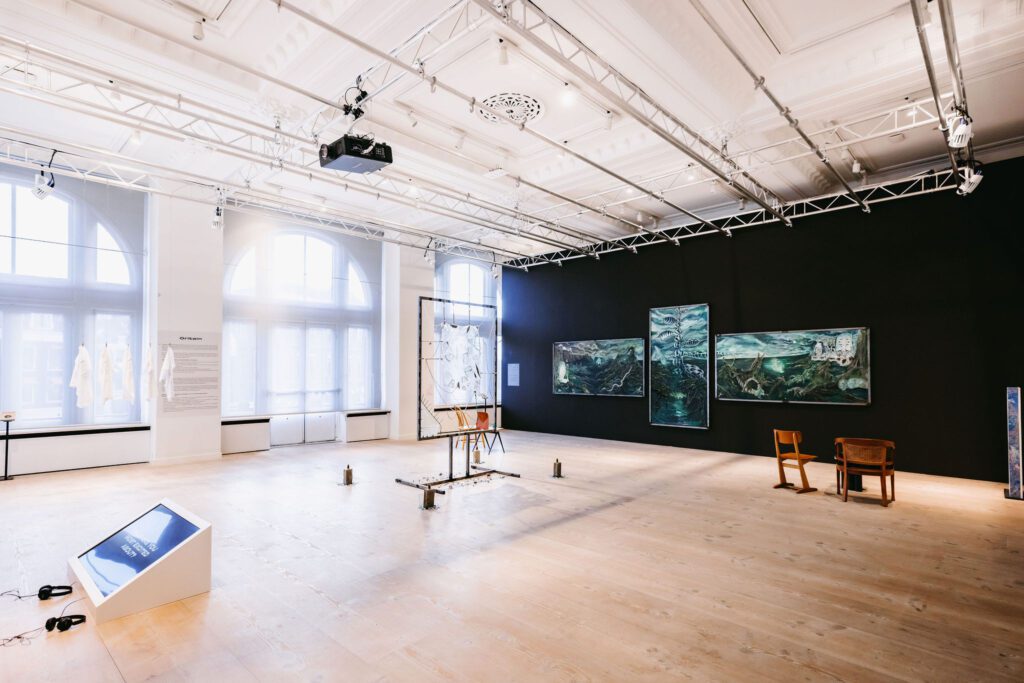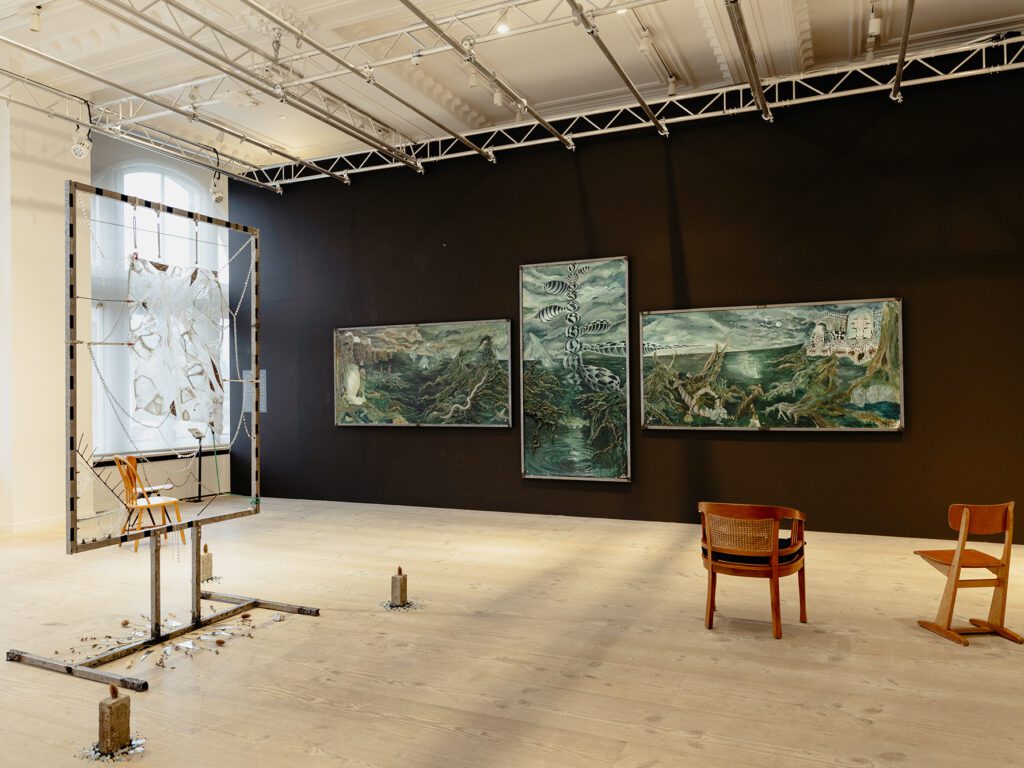Who are you and what do you love most about what you do?
We are Tasio Bidegain and Benoît Gilles Michel. We love being honest, free, and independent in our work.
Which role does sustainability play within your work/practice?
We always try to work with materials that exist in our immediate surroundings. While working in our studio in the industrial harbor of Amsterdam, we used a lot of construction materials that are linked to transportation. The formats of each panel of agglomerated wood we painted on for this triptych are international measures (122x244cm) meant to facilitate global trade on cargo ships. The silicone and the acrylic we painted with are also mediums used within industrial construction. Using these found materials is for us a form of honesty, showing the direct influence of an environment on our practice.
The new exhibition at Fashion for Good is called Knowing Cotton Otherwise. Can you tell us more about your contribution to this exhibition and what your process was like?
The painting was created before the conception of the exhibition, but since it is a piece that is open for interpretation, the curators of the show saw in it thematics that were linked to the exhibition. The images we create do not have a fixed narrative and anyone can re-appropriate it and tell their own story with it. This swap landscape scene we created is for us linked with movement and transit in between different spaces, a story that can be linked with cotton and its history. The history of the port of Amsterdam in which we created this piece is directly connected to industrialization, colonialism, and capitalism.
What do you hope for people to take away after seeing your work in the museum?
New perspectives.
The exhibition Knowing Cotton Otherwise is based on collectivity and community. Why is a community-driven mindset that strives for collectivity important to you?
Universal thinking is at the centre of our thought process. For us, everything is circular just like our painting. The world is a spiral staircase.
You probably had many conversations during the process of creating the painting. What were some of the most important conversations you’ve had that you took with you?
This painting was about action, not conversation. We tried to do everything with our heart, being as aware as possible of our environment and how we moved in it, how we were moved by it. We tried to find moments of grace, of mystery in the greyness of our surroundings. Intuition played a big role and we painted everything in a sort of trance state, trusting our instincts and going with them to places we didn’t think we could go. All the theorisation of the work came after it was done, as we discovered what we had created.



